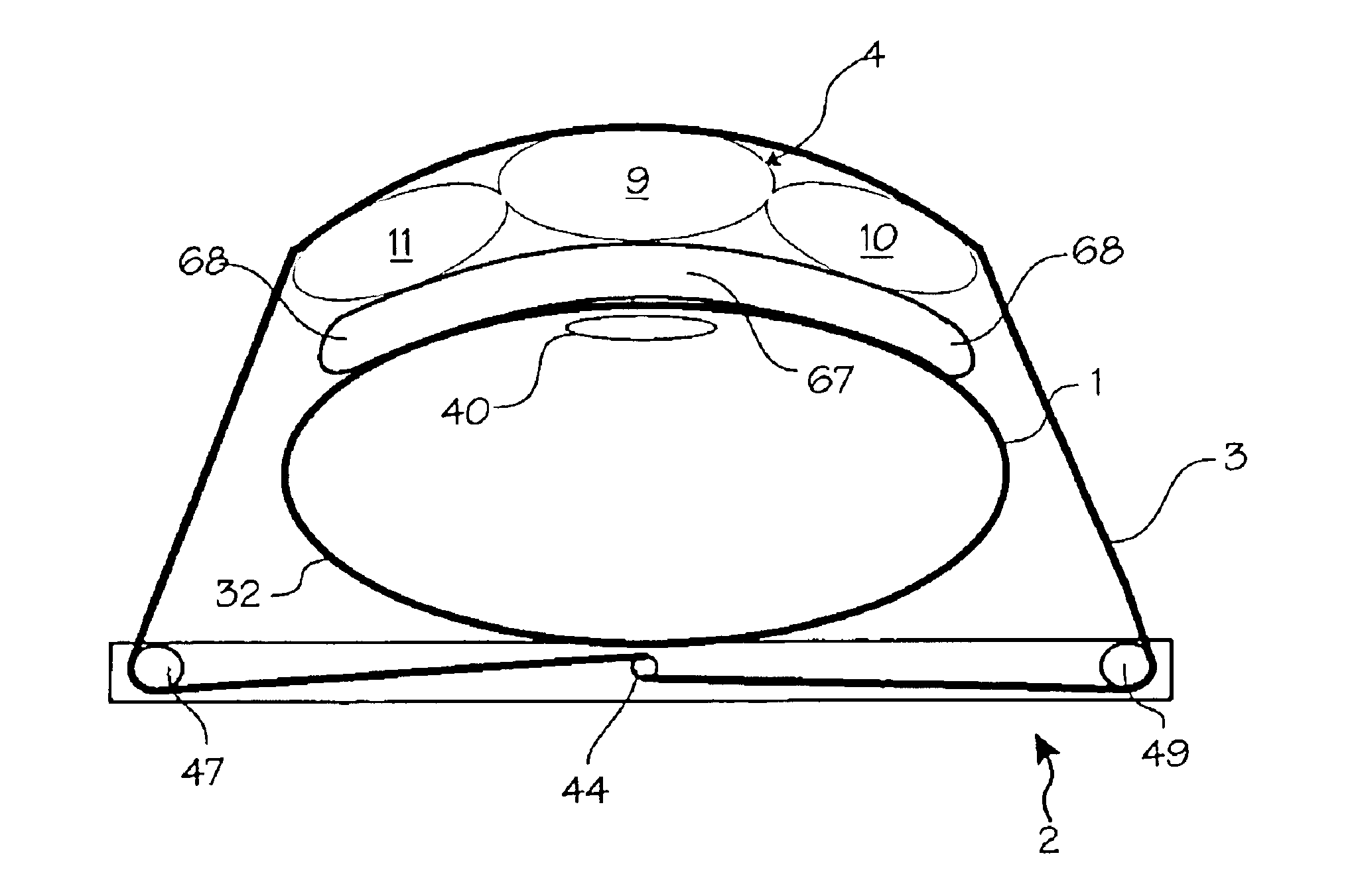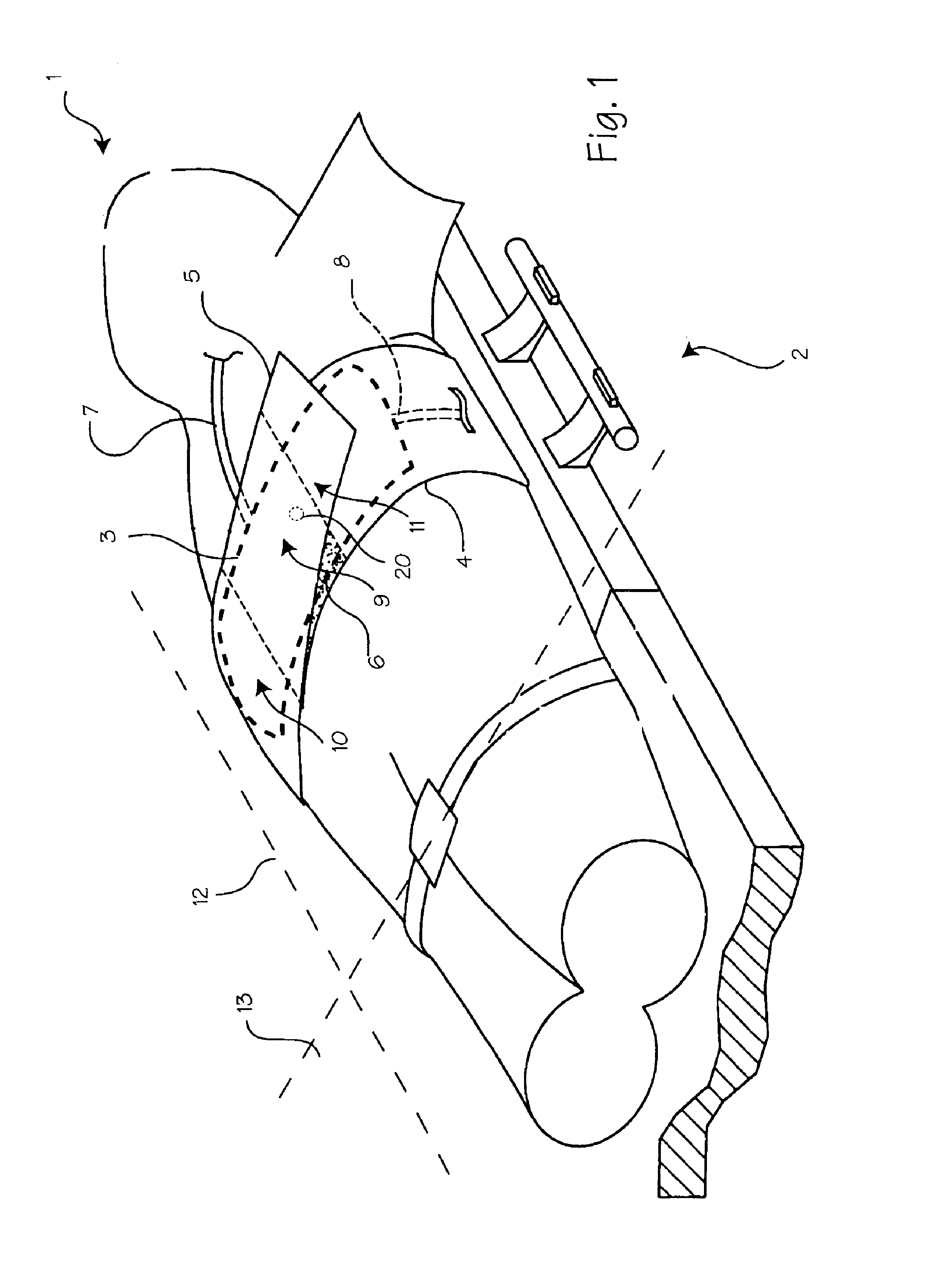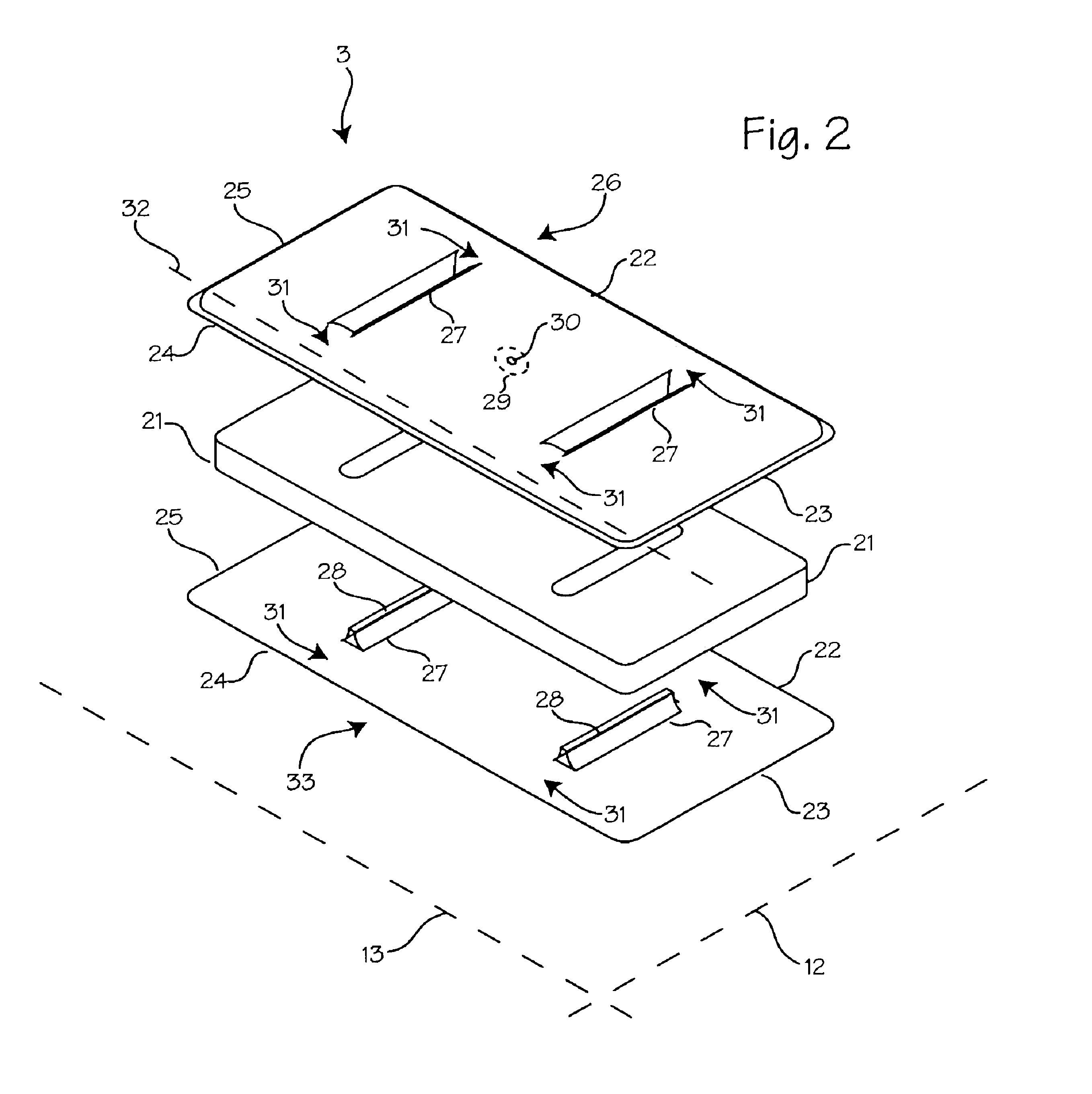CPR compression device and method
a compression device and cardiac arrest technology, applied in the field of emergency medical devices and methods and the resuscitation of cardiac arrest patients, can solve the problems of long periods of cpr, difficulty, if not impossible, to maintain adequate chest compression of heart and rib cage, etc., and achieve the effect of maximizing the effectiveness of chest compression
- Summary
- Abstract
- Description
- Claims
- Application Information
AI Technical Summary
Benefits of technology
Problems solved by technology
Method used
Image
Examples
Embodiment Construction
[0021]FIG. 1 illustrates a patient 1 with a chest compression device 2 fitted on the patient and ready for use. A belt 3 and a belt tightening mechanism within the backboard comprises the means for compressing the chest of the patient. The belt is operably connected to the belt tightening mechanism, which provides the force necessary to tighten the belt about the patient's chest and thorax. The belt tightening mechanism may be a motor and motor driven spool as shown in co-pending application Ser. No. 09 / 866,377, other automatic means for tightening the belt, or a pull-lever or other manual means for tightening the belt.
[0022]A bladder 4 is disposed between the patients chest and the compression belt. The bladder 4, shown in phantom to indicate its position below the belt, is secured to the belt 3. In turn, the belt is secured to the body with two overlapping areas 5 and 6 of hook and loop fastener, Velcro®, or other fastener. The bladder 4 may be provided with a sensing line 7 which...
PUM
 Login to View More
Login to View More Abstract
Description
Claims
Application Information
 Login to View More
Login to View More - R&D
- Intellectual Property
- Life Sciences
- Materials
- Tech Scout
- Unparalleled Data Quality
- Higher Quality Content
- 60% Fewer Hallucinations
Browse by: Latest US Patents, China's latest patents, Technical Efficacy Thesaurus, Application Domain, Technology Topic, Popular Technical Reports.
© 2025 PatSnap. All rights reserved.Legal|Privacy policy|Modern Slavery Act Transparency Statement|Sitemap|About US| Contact US: help@patsnap.com



